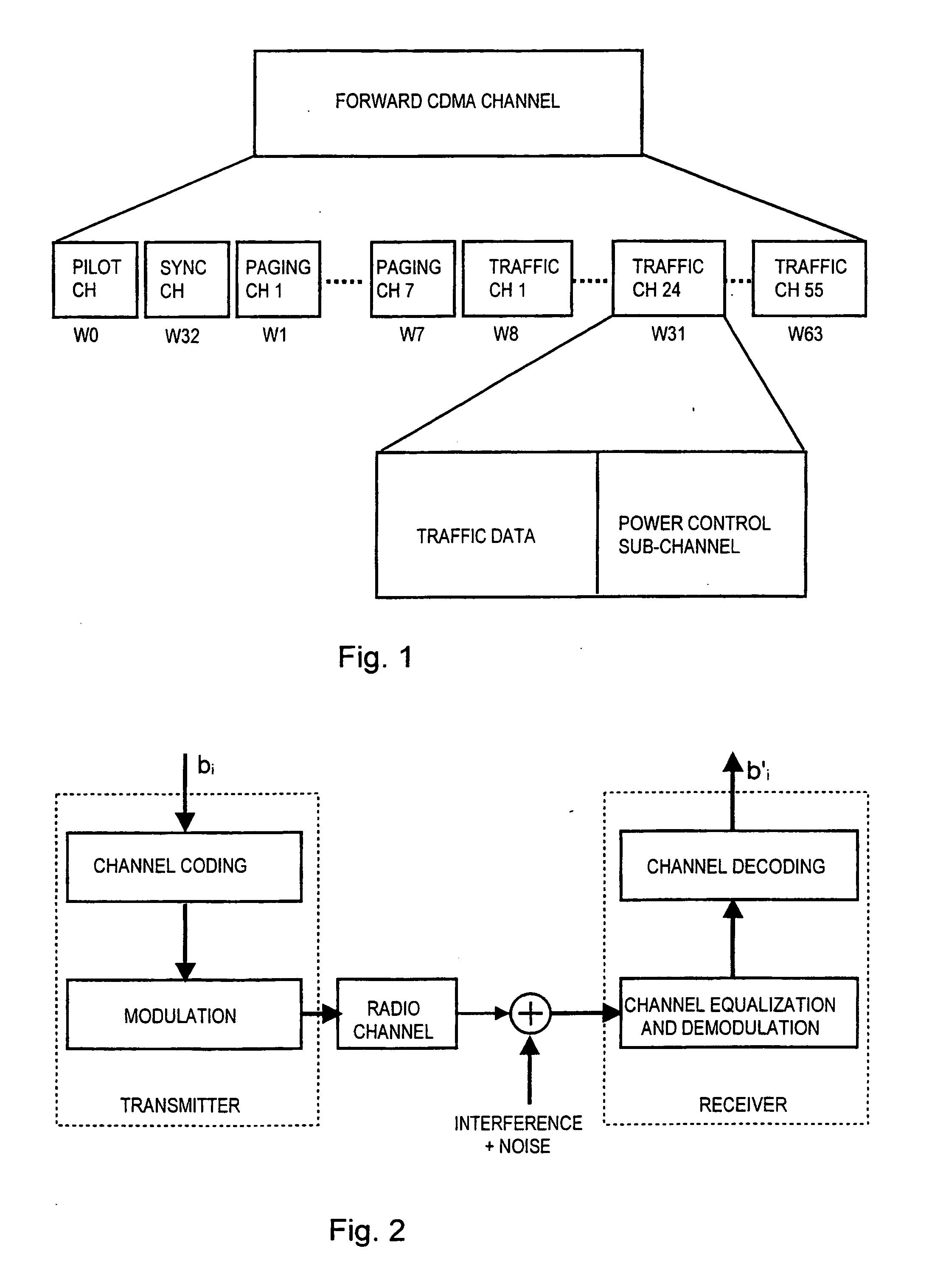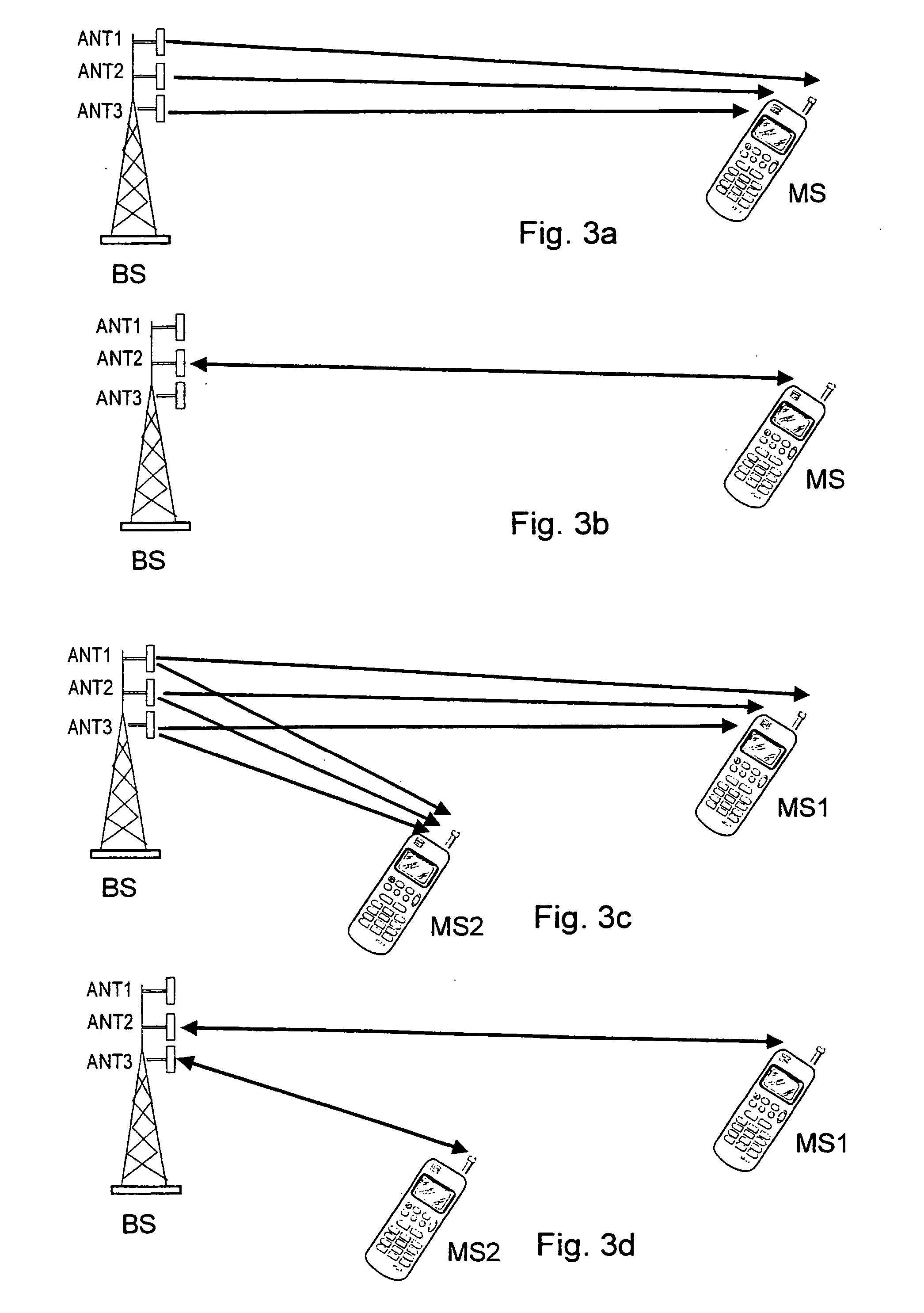Transmission antenna diversity
a technology of transmission antenna and diversity, applied in diversity/multi-antenna system, transmission monitoring, site diversity, etc., can solve problems such as unsuitable ep publication solution, poor data transmission quality, and antenna chosen by a mobile station may be misinterpreted at the base station, so as to improve the quality of data transmission
- Summary
- Abstract
- Description
- Claims
- Application Information
AI Technical Summary
Benefits of technology
Problems solved by technology
Method used
Image
Examples
first embodiment
[0053] The invention was described above in the case of a connection between one base station BS and one mobile station MS. FIG. 9 shows the invention in a situation, where mobile station MS is simultaneously connected with more than one base station, but the functionality according to the invention is applied to one connection only. In the example shown in FIG. 9, the functionality according to the invention is applied to the connection between mobile station MS and base station BS3, whereby for the connections between mobile station MS and base stations BS1 and BS2 some such transmission antenna route is used, which is chosen by some state-of-the-art method. In the situation shown in FIG. 9, e.g. in a soft handover situation, base station BS3 thus through all its transmission antennas ANT1 and ANT2 transmits a common channel, whose signal has been shaped by a transmission antenna beam specific signal shaping method. Mobile station MS compares the received signals with one another ...
fourth embodiment
[0060] In the invention, the functionality according to the invention can be turned off for the time of a soft handover situation. If the choice of transmission antenna route according to the invention is performed at standard intervals of time, this may be implemented e.g. by a message from mobile station MS to the network in a soft handover message. Mobile station MS may make known in this message, that no antenna route choice message in accordance with the invention will be transmitted for the time being. When the soft handover situation is over, mobile station MS may send to the network a message that the choice of antenna route continues or it may simply send the antenna route choice message to the base station among the data which is to be sent to the base station. If the choice of transmission antenna route is performed at a random moment, the functionality according to the invention can be most easily turned off for the time of a soft handover situation in such a way that mo...
fifth embodiment
[0061] In the invention, the base station transmits essentially at the same time through its several transmission antenna routes to mobile station MS on the traffic channel an identifier identifying the individual transmission antenna route, e.g. in the case shown in FIG. 3a through transmission antennas ANT1-ANT3. Mobile station MS receives the traffic channel signal of all transmission antenna routes and from these received signals it determines which one is best, e.g. based on the signal level, the SIR (Signal to Interference Ratio) or the distance attenuation. Mobile station MS notifies base station BS of the best transmission antenna route of its choice with the aid of an identifier which it has perceived in the traffic channel signal of the concerned transmission antenna route. With the aid of bit sequences of the identifier it is also possible to improve the comparison of signals of the transmission antenna routes in the receiving unit. Using these it is e.g. possible to calc...
PUM
 Login to View More
Login to View More Abstract
Description
Claims
Application Information
 Login to View More
Login to View More - R&D
- Intellectual Property
- Life Sciences
- Materials
- Tech Scout
- Unparalleled Data Quality
- Higher Quality Content
- 60% Fewer Hallucinations
Browse by: Latest US Patents, China's latest patents, Technical Efficacy Thesaurus, Application Domain, Technology Topic, Popular Technical Reports.
© 2025 PatSnap. All rights reserved.Legal|Privacy policy|Modern Slavery Act Transparency Statement|Sitemap|About US| Contact US: help@patsnap.com



